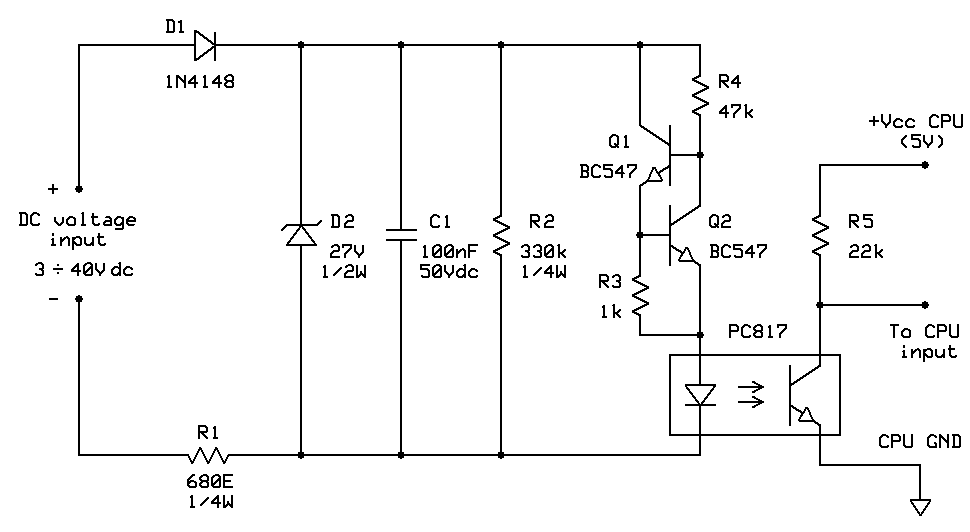DC input circuit

If one compares DC to AC input circuit presented in this article, there are two obvious differences: there is no diode bridge at the very input while there is a current limiter formed with Q1 and Q2 put in place of R4. The former is the result of the fact that we assume that the electrician is expected to be able to figure out the right polarity of the voltage to which he or she connects input wires. However, it will not hurt to design in a diode bridge in this circuit as well if there will be no information on the voltage polarity (or if it may be changing in time) in a particular field application. It would be sufficient to use 1N4148 diodes for voltages up to 80Vdc.
Current limiter replaces a fixed resistor because we wanted the same circuit design to behave equally well over a rather wide range of DC input voltages that one might expect various sorts of devices and actuators to be supplied by. As is denoted in the diagram above, the proposed circuit is able to input voltages both as low as 3Vdc and as high as 40Vdc. Minimum acceptable voltage depends on the current limiter minimum operating voltage (1.2V) and forward voltage drops in optocoupler LED (1.2V) and D1 (0.6V). If sensing even lower voltages is required, one can exclude D1, and even leave out the current limiter. But the circuit as presented here should be able to cover the range of DC voltages found in almost any analog or digital circuit one can imagine.
If input voltage is higher than Zener diode breakdown voltage (27V), input current of the circuit increases as in that case fixed resistor R1 becomes the dominant input current limiting component. Input current can then be calculated as:
Iin = (Vin - Vzener) / R1
If one remembers that DC circuits rarely operate at voltages higher than 24V, the logic behind choosing Zener breakdown voltage as high as 27V becomes obvious - below 27V, input current is limited due to Q1/Q2 action to 0.6mA. D1 protects Q1 and Q2 not only from voltages higher than 27V (they are able to withstand up to 45V), but also from possible inverse voltages.
We used both of these circuits in several of our automatic control modules and found them very reliable and able to input wide range of voltages with no trimming. Input currents of both circuits are very low and do not present significant load to any practical device they might be connected to.

